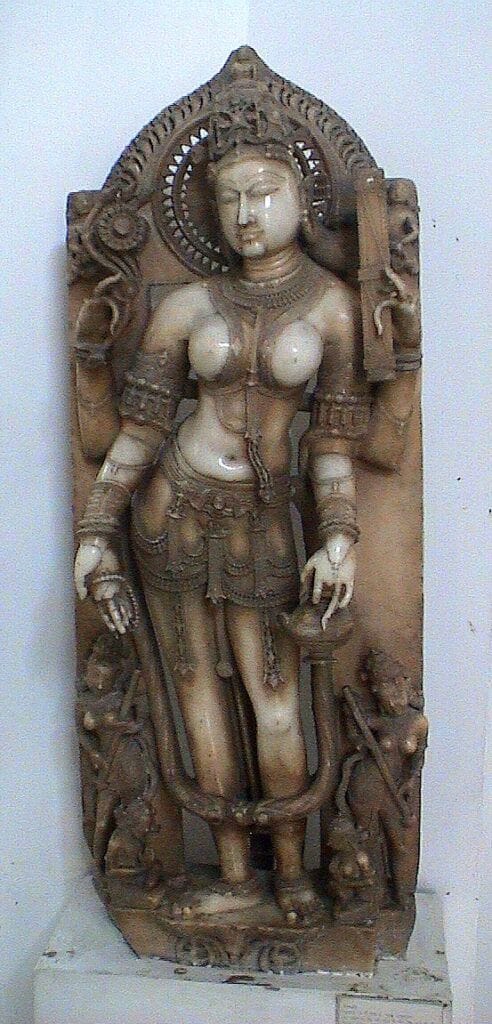
A kid in a langot, still worn in India by traditional wrestlers. Image Source: https://www.danielmalikyar.com/kushti-india/
Because of this belief, and probably because of the climate, India has always had a tradition of draped apparel, starting from the langot, a rectangular cloth worn as underwear. Interestingly. I remember my grandfather still wore a langot until the 1960s, as I remember long strips of cloth drying on the washing line.

Statue of Saraswati at the National Museum Delhi. Note her apparel.
Silhouettes of Indian Apparel : India is perhaps unique in its history of wearing unstitched clothing from pre-Vedic times, draped on the body in stylized ways. Interestingly, in Vedic India, the body was considered an integral part of a human personality. Therefore there was no stigma attached to body parts being on display. As a culture, too, India has traditionally believed in the fluidity of form, matching well with draped garments.
Delving into the history and the marvelous workmanship may answer these questions.
Imagine a home, an airport, or a hotel with just bare floors room after room, no matter how lovely that floor might be. Through the ages, carpets have warmed our homes literally and visually, added to the decor, and provided insulation. In many cultures, they are regarded with enormous esteem, part of prayer ceremonies and religious places. The motifs are replete with history and cultural references, common across geographies and nations. (more…)
In earlier blogs, we have discussed the Paisley and the Cypress, arguably two of the most important. Today, let us look at a few more, perhaps less known but equally historical. (more…)

Cypress Motif: When studying the history of motifs in the arts and crafts, we often read about the Paisley. But there is another motif, more mysterious, more philosophical, one that represents death and eternal life. And that is the Cypress. Many say that the Paisley was born of the cypress when a stray songbird sat on its very tip, bending it slightly. But let’s go back to the beginning.
Indian Floral : For centuries, plants and flowers have inspired Indian artists of different genres. The lotus flowers and floral meanders depicted in the Buddhist sites dating back to the 3rd century, the depiction of Hindu God Vishnu on a throne of a lotus flower, and the famous paintings of Ajanta and Ellora caves from the 5th century are the most excellent and oldest examples depicting florals in Indian Art. However, florals did not become the design language for Indian textiles for a long time, not until the beginning of the Sultanate Period in the twelfth century when Islamic culture started influencing Indian art & design.


